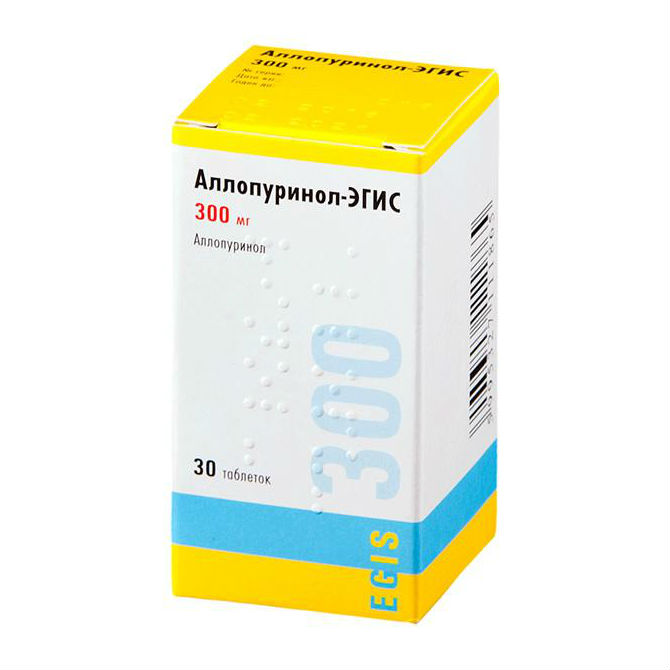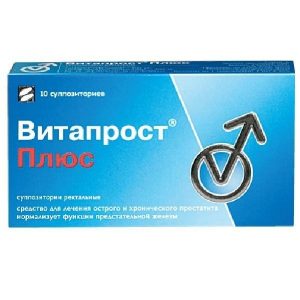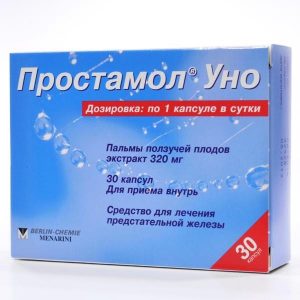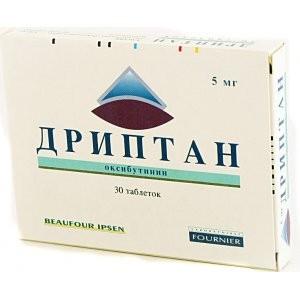Description
Release form
tablets
Packing
30 tablets.
Pharmacological action
Means that violate the synthesis of uric acid. Allopurinol is a structural analogue of hypoxanthine. It inhibits the xanthine oxidase enzyme, which is involved in the conversion of hypoxanthine to xanthine and xanthine to uric acid. This is due to a decrease in the concentration of uric acid and its salts in body fluids and urine, which helps to dissolve existing urate deposits and prevents their formation in tissues and kidneys. When taking Allopurinol, urinary excretion of hypoxanthine and xanthine increases.
Indications
Treatment and prevention of gout and hyperuricemia of any genesis (including in combination with nephrolithiasis, renal failure, urate nephropathy). Recurrent mixed oxalate-calcium kidney stones in the presence of hyperuricosuria. Increased urate formation due to enzymatic disorders. Prevention of acute nephropathy with cytostatic and radiation therapy of tumors and leukemia, as well as with complete therapeutic fasting.
Contraindications
Severe impaired liver and / or kidney function, pregnancy, lactation. Hypersensitivity to allopurinol.
Use during pregnancy and lactation
Allopurinol-Egis is contraindicated for use during pregnancy and lactation.
Composition
1 tablet contains 100 mg allopurinol
Auxiliary ingredients: lactose, starch, polyvidone, talc, magnesium stearate, sodium amylopectin glycolate.
Dosing and Administration
Dosage regimen Allopurinol-Aegis set individually, under the control of the concentration of urate and uric acid in the blood and urine. Adults ingestion – 100-900 mg / day, depending on the severity of the disease. The frequency of administration is 2-4 times / day after meals. Children under the age of 15 years – 10-20 mg / kg / day or 100-400 mg / day. Maximum doses: in case of impaired renal function (including due to urate nephropathy) – 100 mg / day. An increase in the dose is possible in cases where, against the background of the therapy, an increased concentration of urates in the blood and urine remains.
Side effects
Nausea, diarrhea, skin rashes, fever are possible.
Drug Interaction
When used with allopurinol, it enhances the action of coumarin anticoagulants, arabinoside adenine, as well as hypoglycemic drugs (especially in kidney dysfunction). Uricosuric agents and salicylates at high doses reduce the activity of allopurinol. When co-administered with allopurinol and cytostatics, myelotoxic activity is more likely than with separate administration. With the simultaneous use of allopurinol and azathioprine or mercaptopurine, the accumulation of the latter in the body is observed, since Due to allopurinol inhibition of xanthine oxidase activity required for biotransformation of drugs, their metabolism and elimination are slowed down.
Overdose
Symptoms: nausea, vomiting, diarrhea, dizziness, oliguria.
Treatment: forced diuresis, hemo-and peritoneal dialysis.
Storage conditions
Store in a dark place at a temperature not exceeding 30 ° C.
D ystvuyushtee substance
Allopurinol
Terms of dispatch from
pharmacies Prescription
dosage form
tablets
Prescription
Prescription
For children over 14 years old, For adults prescribed by a doctor, For children prescribed by a doctor




